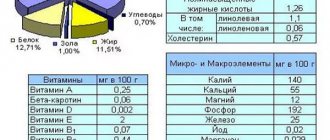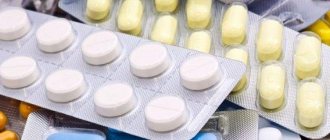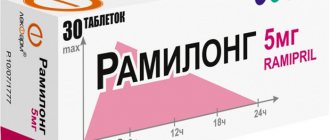In recent years, Glycine has become quite widespread among all parts of the population, since it is capable of having a complex effect on the body, due to which it is used in the treatment of neurological and vascular diseases. The drug contains a neurotransmitter amino acid, which causes inhibition of brain neurons and also reduces the production of biologically active substances that promote stimulation of the nervous system. Some experts prescribe the drug in combination with antihypertensive drugs for the treatment of hypertension. However, before starting use, patients need to find out how glycine affects blood pressure and is it effective in eliminating hypertension?
Glycine for blood pressure
Glycine is an amino acid that has a mild sedative effect, activates metabolism in the brain, normalizes the transmission of nerve impulses and the ratio of excitation and inhibition processes in neurons. The substance is especially effective on patients suffering from VSD. The amino acid also reduces the production of catecholamines (stress hormones), which raise blood pressure and cause tachycardia. The general muscle relaxant effect of the substance leads to a slight dilation of blood vessels. The nutrient does not directly affect the heart, but reduces the load on the myocardium.
Glycine and metabolism
The main source of energy in the body is glucose. This process occurs in the mitochondria of each cell using the Krebs cycle. How does glycine work in this case? It influences the activity of all reactions occurring in the Krebs cycle. And if the body lacks oxygen, thanks to glycine it will be used as efficiently as possible. That is, the cells will be able to perform their functions even under hypoxic conditions.
A lack of glycine in the body is observed quite rarely. However, the problems arising from its shortage are very serious. First of all, metabolic processes occurring especially in the cerebral cortex are affected. For all its cells to function normally, a lot of energy is needed, that is, a large number of ATP molecules.
Nervous tissue synthesizes this amino acid in the required quantities, but under increased stress, for example under stress, its production increases several times. How does glycine work in the body under stress? At such moments, an additional dose of this amino acid will not hurt at all, since protective inhibition processes are activated and cellular respiration is simultaneously activated. Thus, glycine helps neurons work better under stress.
How else does glycine affect the body? With the participation of this amino acid, glutathione is synthesized, which is a powerful endogenous antioxidant. Therefore, the drug Glycine is often prescribed if there is a risk of damage to body cells by free radicals.
Glycine is also involved in the synthesis of many compounds:
- the non-protein, iron-containing part of hemoglobin, called hemes;
- conjugated bile acids;
- lipids;
- creatinine;
- coenzymes NAD and FAD;
- peptides.
And yet, one of the main properties of glycine, due to which it is widely used in medicine, is the connection of this amino acid with glycine receptors located both in the brain and in the spinal cord. Glycine reduces the production of amino acids, which have an exciting effect on the body, and at the same time stimulates the synthesis of GABA - gamma-aminobutyric acid, which is the main neurotransmitter of central inhibition in the nervous system. Thus, it becomes obvious that the benefits of glycine for the body are very great.
Taking glycine for hypertension
Hypertension is a disease in which blood pressure rises to 140/90 mm Hg. It is provoked by the following conditions:
- decreased mental and physical performance;
- nervous overstrain after stressful situations;
- emotional instability;
- excessive excitability or irritability;
- neuroses;
- sleep disorders.
With such symptoms, doctors mainly use glycine in combination with antihypertensive drugs to normalize blood pressure.
Now Foods, Glycine, Pure Powder, 454 g
★★★★★
RUB 1,263
More details
Features of use for hypotension
The mechanism of action of Glycine at high blood pressure is clear, but is it possible to take the drug at low blood pressure? Since aminoacetic acid inhibits the production of adrenaline, which can increase blood pressure, hypotensive patients should use the drug with caution under strict blood pressure control.
The use of the drug for low blood pressure causes short-term effects without revealing systemic effects
One of the options when Glycine increases blood pressure is hypotension due to vegetative-vascular dystonia or due to mental fatigue. Then, as a result of eliminating the underlying cause, it can have a hypertensive effect.
Glycine at low pressure, when readings are below 110/50 mm. Hg Art. contraindicated. If the patient's condition worsens after taking the pill, a medication containing caffeine should be taken.
General recommendations for admission
The glycine-based drug is available in a concentration of 100 mg. According to the instructions, you should drink it 2-3 tablets a day, and for insomnia - 1 tablet. 20 minutes before bedtime. The course of treatment is 2-4 weeks.
You can read the detailed instructions and also find out whether glycine increases or decreases blood pressure by watching the video:
Glycine: instructions for use, analogues, price of tablets and reviews
Amino acid supplements may contain higher dosages and may have separate dosage recommendations.
Attention! For any problems with blood pressure, treatment with glycine should be discussed with your doctor.
For hypotension, the daily dosage should be in the range of 100-200 mg. It is recommended to combine the drug with physical activity, which raises blood pressure and increases heart rate. During the entire course of treatment, tonometry and heart rate calculations should be carried out in the morning and evening before taking the drug: if the numbers are below 90/60 mm Hg, then it is better to skip taking the drug.
Supplements with high glycine concentrations are prescribed to lower blood pressure. The course of treatment can be extended on the recommendation of a doctor.
Characteristics of the medication
Glycine belongs to a group of metabolic agents that accelerate metabolic processes in brain cells, while simultaneously causing inhibition of the transmission of nerve impulses by the central nervous system. The active ingredient in the drug is aminoacetic acid, which is involved in the transmission and regulation of nerve impulses. The active component has a complex effect on the body, as it is able to penetrate the structural elements of all organs, thereby activating their functional ability.
Tablets are packaged in blisters in quantities of 50 pieces
Glycine promotes the expansion of the vascular lumen due to the ability to block alpha-adrenergic receptors. Thanks to these properties, it restores blood circulation and normalizes blood pressure. If the patient has high blood pressure, then taking the drug will stabilize its threshold values.
Glycine helps in normalizing the following conditions:
- Unstable psycho-emotional background (aggression, depressive states, depressed mood).
- Disorders of the processes of sleep and falling asleep.
- Vegetative-vascular disorders, which may be caused by an imbalance of hormones.
- General cerebral disorders after ischemic stroke and traumatic brain injury.
Possible harm and contraindications
Glycine with high blood pressure is usually well tolerated. This amino acid enters the body daily through food and is considered safe. A substance can cause harm only if the recommended dosages are not followed or the medicine is used without taking into account contraindications, which include the following conditions:
- intolerance to substances included in the drug;
- decreased activity of sucrase, isomaltase;
- indigestibility of fructose;
- hemorrhagic stroke;
- cerebrovascular accident;
- hemorrhages in the brain.
Hypotension is not a direct contraindication for the use of glycine, since it reduces blood pressure only slightly. However, it is recommended to adhere to minimum dosages, regularly carry out tonometry and monitor clinical symptoms - the appearance of dizziness, tinnitus, flies before the eyes, weakness.
On the first day of treatment, allergic reactions to the drug may occur. They manifest themselves in the form of rashes, itching, redness and swelling. If symptoms do not disappear within a week, you should stop taking glycine and consult a doctor.
Why is it necessary to take glycine in the form of a drug?
During normal functioning of the body, glycine is produced in sufficient quantities. However, when there is an acute need for this amino acid, for example during stress or excessive physical activity, its internal reserves are quickly used up, and it is not so easy to compensate for the gradually arising deficiency. Indeed, under unfavorable conditions, other tasks appear in the body. Therefore, there is a risk of developing glycine deficiency. In this regard, there is a need for additional supply of this amino acid from the outside. Moreover, it is impossible to compensate for the deficiency only with products containing it. To do this, you need to start taking glycine in the form of a medicine. And it should be done correctly.
The most advanced form of the drug Glycine is tablets for buccal and sublingual administration. The uniqueness of this form is that the drug was created using microencapsulation technology. That is, each glycine molecule is enclosed in a separate capsule, due to which it is not destroyed, but at the same time maintains high bioavailability. The absorption process begins in the oral cavity, where the substance easily penetrates through the mucous membrane into the bloodstream and quickly spreads throughout the body. A person who takes Glycine regularly does not develop an addiction to the drug. In addition, such an intake of amino acids from the outside is an impetus for its production by the body’s own forces.
Reviews about the application
You can share your experience of using glycine for hypertension and leave feedback on the article in a special form:
| Leave your review | |
| 1 2 3 4 5 | |
| Send Cancel | |
Send your review
Glycine and blood pressure
Average rating: Number of reviews: 0
According to customer reviews, the drug helps normalize sleep and blood pressure, elevates mood, improves memory and attention. Glycine is especially effective in treating VSD and hypertensive crises provoked by panic attacks, neuroses and stress. The main advantages of using glycine for blood pressure:
- stabilization of the nervous system;
- increasing stress resistance;
- enhancing the effect of antihypertensive therapy.
The drug also has one disadvantage:
- Glycine helps with high blood pressure only in combination with other drugs that lower blood pressure.
How does the drug affect blood pressure?
Before starting drug therapy, the patient must determine whether Glycine increases or decreases blood pressure, since there are some peculiarities in its use.
One of the indirect effects of the drug is its hypotensive effect, in which it affects the cardiovascular system. Thanks to the sedative effect, the walls of blood vessels relax and vascular spasm is eliminated, which has a positive effect on the stabilization of indicators.
Glycine is included in the complex treatment of arterial hypertension
The medication is capable of having a blood pressure-lowering effect, however, hypertensive patients should take into account that its effectiveness is somewhat lower than when taking antihypertensive drugs. The effectiveness of Glycine is manifested in cases where hypertension was provoked by prolonged stress, anxiety, mental or physical fatigue. If the disease arose as a result of pathological changes in the functional state of the vascular system, then this medicine will not be effective at high blood pressure.
The drug is capable of causing relaxation of the smooth muscles of blood vessels, myocardium, and internal organs, due to which vascular spasm is eliminated and heart rhythm is restored.
Indications for use
Indications for use:
- – reduced mental performance;
- – stressful situations - psycho-emotional stress (during exams, in conflict situations, etc.);
- – deviant (deviating from the norm) forms of behavior of children and adolescents;
- – various functional and organic diseases of the nervous system, accompanied by increased excitability, emotional instability, decreased mental performance, memory and sleep disturbances: neuroses, neurosis-like conditions and vegetative-vascular dystonia, stress nervous disorders, consequences of neuroinfections and traumatic brain injury, perinatal and others forms of encephalopathies (including those of alcoholic origin);
- - ischemic stroke.
Contraindications: hypersensitivity to glycine or other components of the drug.
Precautions for use: does not require special precautions.
Use during pregnancy and breastfeeding: Glycine is not recommended for use during pregnancy and breastfeeding due to the lack of sufficient data.
Selection of analogues
The pharmacological market presents a wide range of drugs similar in mechanism of action to Glycine.
The substitute contains a higher dose of active ingredients supplemented with vitamin supplements
Analogues that contain an identical active substance have the following trade names:
- Glycine BIO (a synonym for a precursor drug, the pharmacological properties of which are aimed at improving metabolic processes in the brain).
- Glycine forte (has more pronounced pharmacological properties, since the tablet contains an increased dose of the active substance).
- Glycised (a substitute that is designed for children to concentrate attention and eliminate anxiety).
Thus, Glycine can be included in complex antihypertensive therapy, since it allows you to stabilize the condition of a hypertensive patient due to its sedative effect on the body. The use of medication for hypotension should be agreed with the attending physician, since there is a risk of collapse. During therapy, such patients need to constantly monitor their blood pressure.









